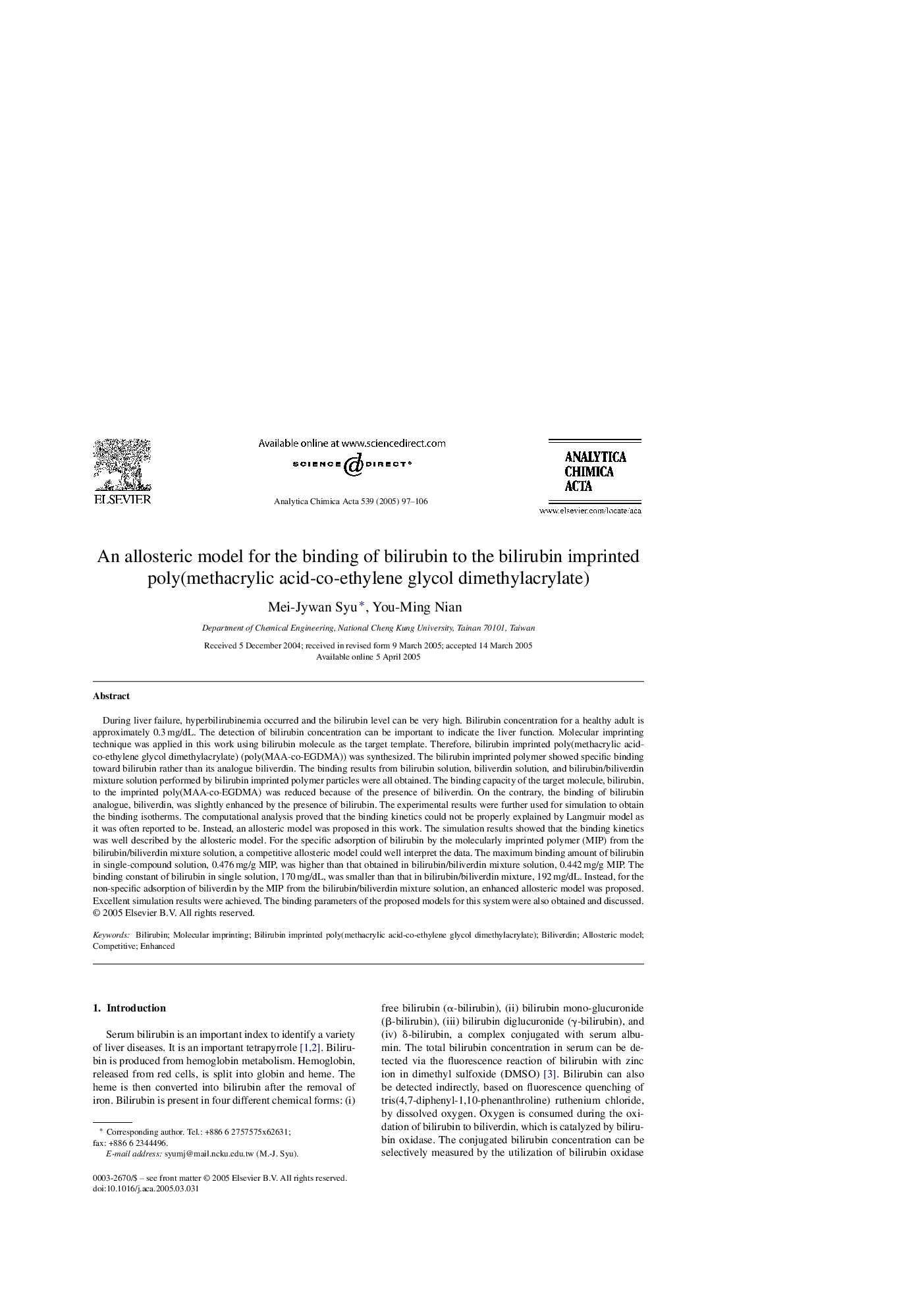| Article ID | Journal | Published Year | Pages | File Type |
|---|---|---|---|---|
| 9743673 | Analytica Chimica Acta | 2005 | 10 Pages |
Abstract
During liver failure, hyperbilirubinemia occurred and the bilirubin level can be very high. Bilirubin concentration for a healthy adult is approximately 0.3Â mg/dL. The detection of bilirubin concentration can be important to indicate the liver function. Molecular imprinting technique was applied in this work using bilirubin molecule as the target template. Therefore, bilirubin imprinted poly(methacrylic acid-co-ethylene glycol dimethylacrylate) (poly(MAA-co-EGDMA)) was synthesized. The bilirubin imprinted polymer showed specific binding toward bilirubin rather than its analogue biliverdin. The binding results from bilirubin solution, biliverdin solution, and bilirubin/biliverdin mixture solution performed by bilirubin imprinted polymer particles were all obtained. The binding capacity of the target molecule, bilirubin, to the imprinted poly(MAA-co-EGDMA) was reduced because of the presence of biliverdin. On the contrary, the binding of bilirubin analogue, biliverdin, was slightly enhanced by the presence of bilirubin. The experimental results were further used for simulation to obtain the binding isotherms. The computational analysis proved that the binding kinetics could not be properly explained by Langmuir model as it was often reported to be. Instead, an allosteric model was proposed in this work. The simulation results showed that the binding kinetics was well described by the allosteric model. For the specific adsorption of bilirubin by the molecularly imprinted polymer (MIP) from the bilirubin/biliverdin mixture solution, a competitive allosteric model could well interpret the data. The maximum binding amount of bilirubin in single-compound solution, 0.476Â mg/g MIP, was higher than that obtained in bilirubin/biliverdin mixture solution, 0.442Â mg/g MIP. The binding constant of bilirubin in single solution, 170Â mg/dL, was smaller than that in bilirubin/biliverdin mixture, 192Â mg/dL. Instead, for the non-specific adsorption of biliverdin by the MIP from the bilirubin/biliverdin mixture solution, an enhanced allosteric model was proposed. Excellent simulation results were achieved. The binding parameters of the proposed models for this system were also obtained and discussed.
Related Topics
Physical Sciences and Engineering
Chemistry
Analytical Chemistry
Authors
Mei-Jywan Syu, You-Ming Nian,
